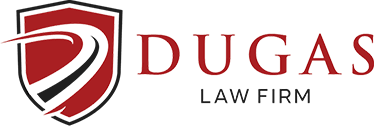Many people find themselves in a panic after a wreck and they don’t know what information to collect or how to protect themselves. If you turn out to be one of those unfortunate people who become involved in a wreck, will you know what steps you should take after your collision? Knowing what to do after a collision is of utmost importance if you want to avoid further injuries to yourself and others, help the clean-up process to go more smoothly, and reduce the cost of an accident. Here are some of the steps that you need to take immediately following an accident.
KEEP AN EMERGENCY KIT IN YOUR VEHICLE
If you want to be truly prepared for an accident, you should always keep an emergency kit in your vehicle. The best place for your emergency kit is your glove compartment (if it will fit). You should keep the following items in your kit so that they are immediately available after an accident:
- Cell phone (unless you keep it on your person at all times)
- Disposable camera so that you will have evidence of the collision scene
- Pen and paper so that you can take important notes after a collision
- List of law enforcement contact information
- Medical card that includes allergies and other important medical information for anyone who is likely to be in the vehicle with you
- Emergency flares, warning triangles, or cones (because of their size, these will need to be kept in your vehicle’s trunk)
Some insurance companies and AAA offer collision kits that include basic items such as a reusable camera, a flashlight, and post-accident instructions that you can follow. You can also find free accident information forms online in a convenient fill-in-the-blanks format.
TAKE STOCK OF INJURIES
One of the first things that you should do after a collision is to take stock of your own injuries as well as the injuries of any of your passengers. If you feel like something is broken and you can’t move properly, don’t attempt to move. Trying to move when you are seriously injured can cause your injuries to become worse, so the best thing to do if you are seriously injured is to wait for emergency assistance. If you and your passengers don’t have any major injuries, move on to the next step.
MOVE YOUR VEHICLE
Thankfully, many car accidents only involve minor injuries. If you are involved in one of these minor car accidents, make sure that you keep yourself and other commuters safe by pulling your vehicle safely to the side of the road. If your car is too damaged to move it off the road, make sure that you and your passengers stay fastened in your seat belts until emergency help arrives. You can become injured or even killed if you attempt to get out of your vehicle in the middle of a busy highway. Remember to turn on your hazard lights as soon as possible, and set out your warning triangles, flares, or cones if it is safe for you to do so.
EXCHANGE INFORMATION
Here is a list of the important information that you should always collect from the other driver after an accident:
- Names, physical addresses, email addresses, and phone numbers of all occupants in the other vehicle
- The number of total occupants in the other vehicle
- Names, physical addresses, email addresses, and phone numbers of any witnesses (it is important to get this information before the witnesses leave)
- License plate number
- Drivers license number of the operator and owner of the other vehicle
- Insurance company name and phone numbers
- Insurance policy numbers
- Exact location of the accident if possible (look for mile markers, exit numbers, intersection address, etc.)
- When emergency services respond to the scene, collect the police department’s accident report number, phone number, officer name and badge number, and the ambulance company and/or fire department who arrived at the scene
This may seem like an overwhelming list of information, but it is important that you collect all of it if you want payment matters to be resolved quickly and accurately. Your information will also help speed up the accident report and cleanup process so that you can get on your way more quickly. Always remember that you should never indicate that you were at fault in an accident. The police will investigate the scene and determine who was at fault, so let them do their job. This is especially important if the other driver is adamant about pinning the blame on you.
TAKE PHOTOS
It is important for you to take photos of the scene of the accident so that you will have documentation of the damage that each vehicle sustained. You will then be able to present these photos to your claims adjustor and make your case. When you take photos, always include the following:
- Damage to property and vehicles
- Identification photos such as license plates and insurance cards
- Accident scene photos (skid marks, road conditions, vehicle positions, debris in roadway)
- Accident scene location identifiers (addresses, intersections, exit numbers, mile markers)
These photographs will also come in handy if the other driver decides to dispute your version of the events leading up to the accident.
STAY CALM
Although being involved in an accident inevitably causes some stress and fear, remember to stay calm and collect the information listed above so that you can properly protect yourself. If anyone in your vehicle or the other vehicle is seriously injured, always call an ambulance and notify the police before doing anything else. If you are level-headed and focused after an accident, you will be able to handle the situation much better and collect the information that you need.


